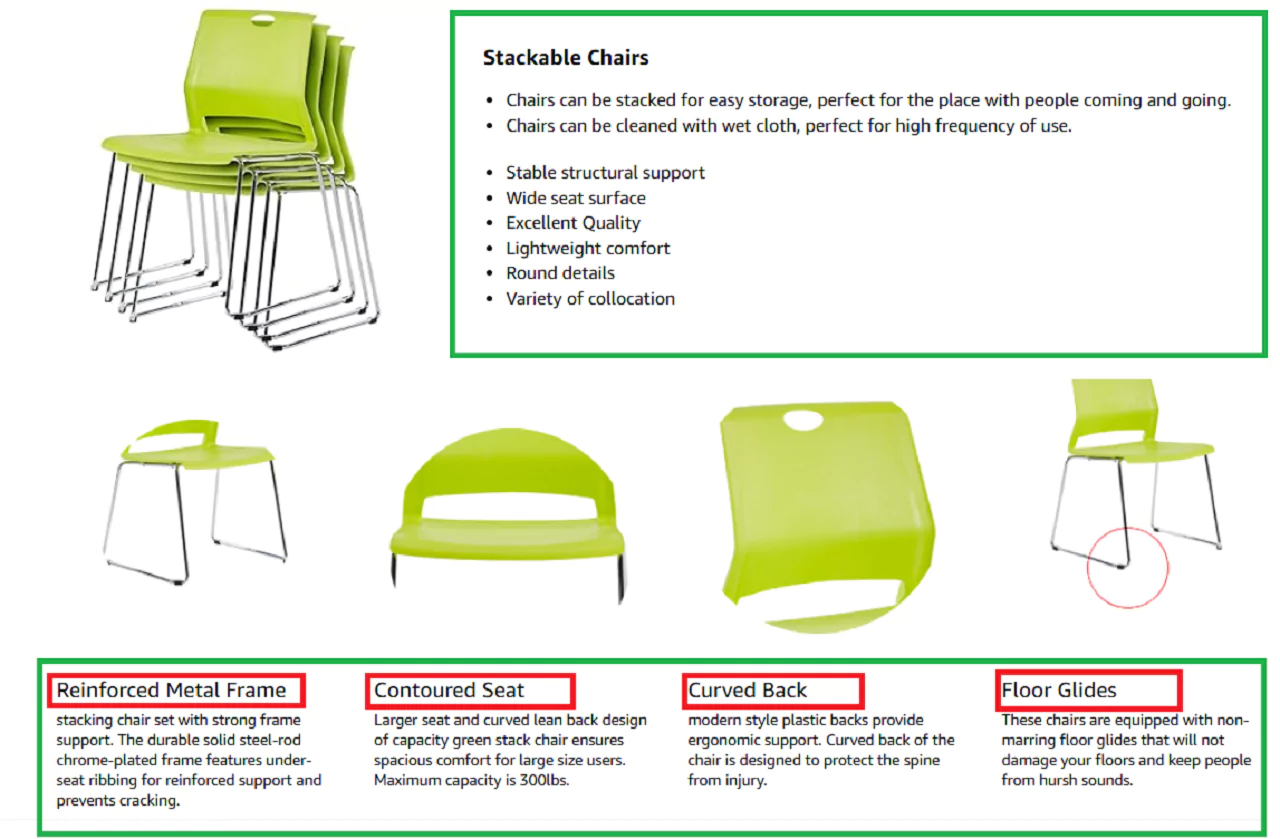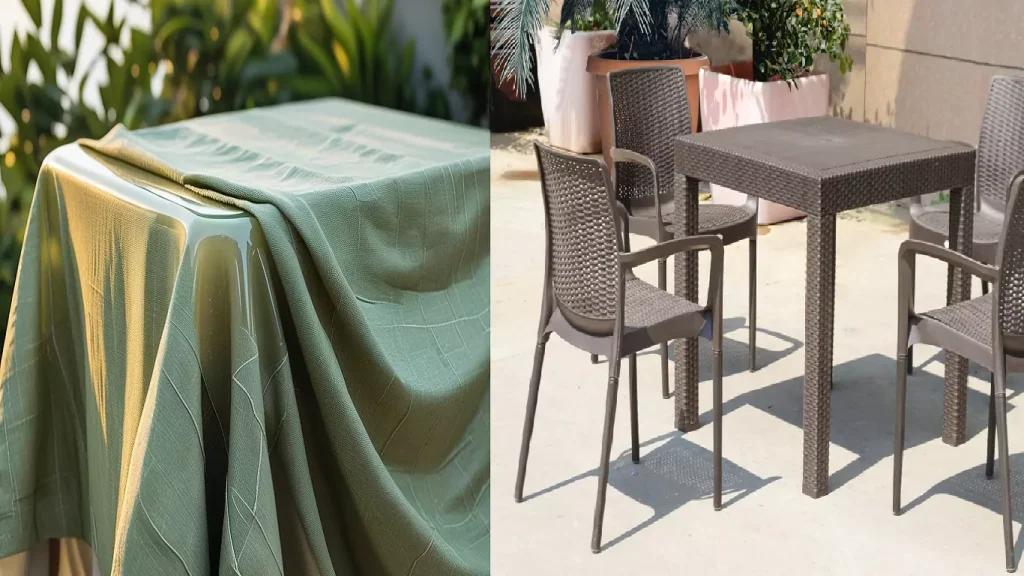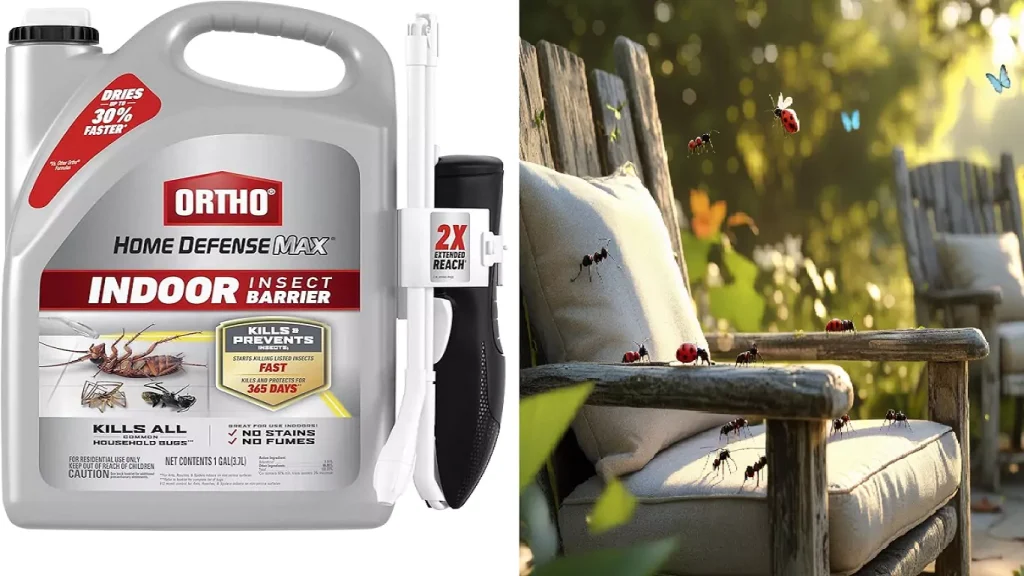Can You Paint Plastic Garden Furniture? What You Need To Do First!
The durability and usefulness of plastic garden furniture have made it popular. It might eventually lose its allure. But can you paint plastic garden furniture? The answer is yes! Painting is a cost-effective way to refresh outdoor furniture. This guide offers detailed instructions, techniques, and creative ideas for painting plastic furniture successfully.
Painting Advice for Plastic Garden Furniture Is Provided by the MissPompadour Painting Community
The MissPompadour Painting Community inspires with unique designs and creative approaches. You can transform your furniture with sleek, modern finishes or vibrant colors. While gentle pastels offer refinement, bright hues may infuse a room with vitality. A weathered, rustic finish can also give character to older furniture.
Learn from community success stories to personalize your garden furniture with confidence. Design a distinctive outdoor look that expresses your personal flair.
Getting Ready: Pick the Correct Color for Your Garden Furniture Made of Plastic
Which Garden Furniture Made of Plastic Would You Like to Paint?
Plastic garden furniture includes chairs, tables, and decorative pieces. Consider the furniture’s shape and surface texture when choosing paint. Smooth surfaces may require extra preparation for paint to adhere well.

Determine if your chosen furniture has intricate details or larger flat areas. These elements affect the kind of paint and the equipment used for application.
What Effect Do You Want to Achieve?
Decide on the desired finish for your garden furniture. Matte finishes offer a softer, subdued appearance that complements natural surroundings.
Choose colors wisely to match your outdoor space. Bright hues bring energy, while neutral tones deliver timeless elegance.
How to Paint Plastic Garden Furniture Correctly: Miss Pompadour’s Instructions
Follow these steps to achieve professional results when painting plastic garden furniture:
Step 1: Cleaning
Start by thoroughly cleaning the furniture. Use soapy water and a sponge to get rid of oils, dirt, and grime. Proper paint adhesion is ensured by a clean surface.
Step 2: Sanding – Yes or No
Light sanding helps paint stick to plastic surfaces. Lightly roughen the surface using fine-grit sandpaper. Avoid over-sanding, as it may damage the furniture. If the furniture already has a textured surface, sanding may not be necessary.
Step 3: Primer
Apply a primer specifically designed for plastic surfaces. Spray or brush on the primer in even, light coats.
Step 4: Painting
Choose high-quality paint that works on plastic surfaces. Use a spray paint or brush-on paint depending on your preference. Apply paint in light, even coats to prevent drips and streaks. Allow each coat to completely dry before adding the next layer for a perfect finish.
Step 5: Varnish
Seal your paint job with a clear varnish to protect against weather elements and UV rays. To guarantee durability, apply a varnish that is appropriate for outdoor use. Apply even, thin layers of varnish and allow it to completely dry.

Tips and Techniques for Painting Plastic Garden Furniture
- Test Your Paint First: Test the paint on a small, inconspicuous area before starting.
- Work in a Ventilated Area: Ensure proper ventilation while painting and drying your furniture.
- Protect Surrounding Surfaces: Use drop cloths or newspapers to protect nearby surfaces.
- Choose the Right Tools: Use a high-quality brush or spray paint applicator for an even finish.
- Follow Drying Times: Allow sufficient drying time between coats and after finishing.
Maintenance After Painting
Regular cleaning will keep your painted furniture appearing brand new. To prevent damaging the paint, stay away from harsh chemicals. Cover furniture during extreme weather to extend the life of your paint job.
Easy DIY: Spray Painting Plastic Chairs
Spray painting plastic chairs is an easy and satisfying do-it-yourself hobby. Can you paint plastic garden furniture really? The answer is yes. With proper preparation and the right materials, you can achieve a professional finish.
Best Spray Paint for Plastic
For long-lasting effects, choosing the appropriate spray paint for plastic surfaces is essential. Here are some top recommendations:
Pintyplus Tech Primer
This primer is specifically designed for low-porous surfaces like plastic. It enhances adhesion, making it easier for the paint to bond. Additionally, using a primer makes your finish more durable.
Pintyplus Evolution Gloss Acrylic
This water-based spray paint works well on plastic and other surfaces. For outdoor furniture, it offers superior resistance, adhesion, and a glossy appearance. Because of its adaptability, it’s a popular option for do-it-yourself tasks.
Other Options to Consider
Look for spray paints labeled as suitable for plastics. Products like acrylic-based formulations offer great compatibility and durability. Ensure the paint matches your desired finish and color.
Prepping the Plastic for Paint

Proper preparation ensures a smooth and lasting finish. Here’s how to prepare:
Clean the Plastic Outdoor Furniture
Use soapy water or a degreasing solution to clean the surface thoroughly. Remove dirt, oils, and any residues that could prevent proper paint adhesion.
Let Them Dry Completely
Ensure the chairs dry entirely before applying any paint. Uneven application and adhesion problems can result from moisture.
Prepare Adequate Space for Spray Painting
Choose a well-ventilated outdoor area to avoid inhaling fumes. Lay down a drop cloth or tarp to protect surrounding surfaces from overspray. Make sure there is no wind to prevent uneven spraying.
Spray Painting Plastic Outdoor Chairs
Spray painting plastic garden furniture is simple with the right technique. Follow these steps:
Apply the First Coat of Paint
Shake the spray can thoroughly before use. Spray in equal, thin coatings while holding it 8 to 10 inches from the chair. Move your hand steadily to avoid drips or streaks.
Apply a Second Coat of Paint
Allow the first coat to dry, which typically takes about 15 minutes. Once dry, apply a second thin coat to ensure even coverage and a smooth finish.
Inspect Your Work
After the second coat dries, check for missed spots or uneven areas. Touch them up as needed to ensure a flawless appearance.
Let Your Furniture Dry Completely
Allow the painted chairs to dry for at least 4 hours before using them. The paint will adhere effectively and stay durable if it is properly dried.
Choosing the Best Paint for Plastic Garden Furniture

Using specialized paint designed for plastic surfaces is essential. Consider these popular choices:
Pintyplus Evolution
This acrylic-based spray paint is known for its smooth finish and environmental friendliness. It is a flexible choice because it may be used with both indoor and outdoor furnishings.
Acrylic-Based Formulations
Choose other acrylic-based paints that specify compatibility with plastics. Excellent adhesion and weather resistance are features of these paints.
Additional Tips for Upcycling and DIY Projects
Experiment with Laminate Paints
If your furniture combines plastic and other materials, laminate paints can provide excellent results.
Use Primers with Colorless Topcoats
Combine a plastic primer with a clear topcoat for enhanced durability and protection.
Apply Multiple Light Coats
Avoid applying a single heavy coat of paint. Use multiple light coats to prevent drips and achieve a smooth finish.
Protect Surrounding Surfaces
Always cover nearby areas with a tarp or newspaper to prevent accidental overspray.
FAQs on Painting Plastic Garden Furniture
What kind of paint will stick to plastic?
To ensure good adhesion, use paints specifically formulated for plastic surfaces such as Krylon Fusion for Plastic or Rust-Oleum Paint for Plastic.
Can you paint plastic outside furniture?
Yes, you can paint plastic outdoor furniture! Just make sure to use weather-resistant paint designed for outdoor use to ensure durability and longevity.
Which paint is ideal for plastic outdoor furniture?
The best paints for outdoor plastic furniture include Krylon Fusion for Plastic and Rust-Oleum Paint for Plastic. These paints offer outstanding adhesion, durability, and resistance to weather.
Is it possible to paint plastic outdoor furniture without first sanding it?
Yes, you can paint plastic garden furniture without sanding it, especially if the surface is smooth. However, lightly sanding the surface with fine sandpaper can help the paint adhere better.
Can I paint plastic outdoor furniture with matt varnishes as well?
Yes, you can use matt varnishes on plastic garden furniture. Just ensure the varnish is suitable for plastic surfaces to achieve a smooth and durable finish.
Can I paint plastic flower pots?
Yes, you can paint plastic flower pots! Use a paint designed for plastic surfaces to ensure good adhesion and durability.
Can I leave my garden furniture outside that has been painted plastic?
Yes, you can leave painted plastic garden furniture outside. Just make sure to use weather-resistant paint and apply a clear protective topcoat to enhance durability and protect against UV rays.
Conclusion
So, can you paint plastic garden furniture? Yes, you can! Your furniture can be transformed with the correct techniques, paint, and preparation. Explore creative designs, choose the right colors, and follow the steps for a professional finish. Let the Miss Pompadour Painting Community inspire your next outdoor project.
Spray painting plastic chairs is an easy and cost-effective way to refresh your outdoor space. By using the right materials and techniques, you can achieve a stunning, professional-looking finish.















